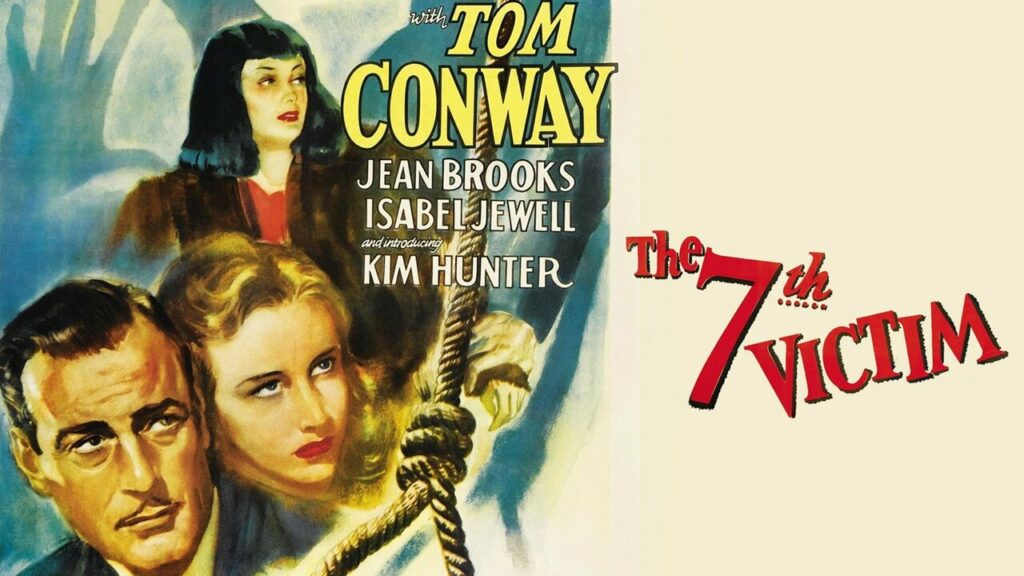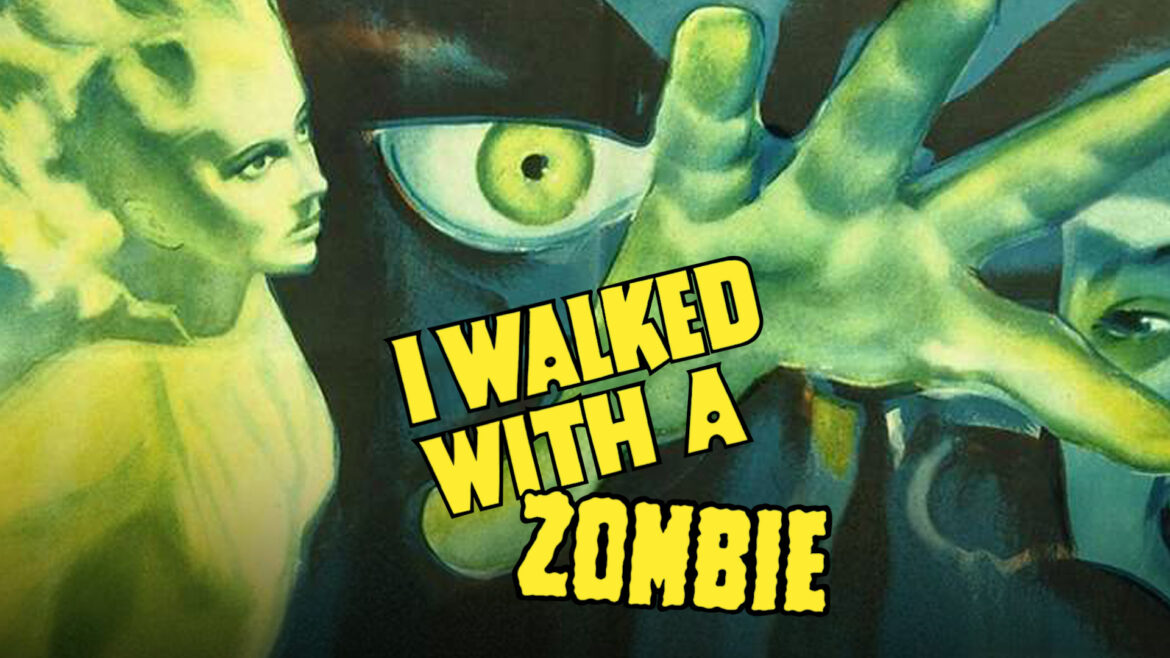More treats than tricks this month on Blu-ray. Not to mention a few I have been praying would come out on Blu-ray someday. Two great Val Lewton-produced chillers from the 1940s; an excellent film about a writer who sidelines as a male prostitute; a new restoration of a great “old dark house” thriller; a double-dose of Klaus Kinski; two fascinating dog films from Severin; five gothic ghost made-for-TV films from a female creative team; a rediscovered psychological psycho-drama, directed by a woman, begging for re-discovery from Grindhouse Releasing; a 4K upgrade of some vintage shockers; and some mouth-watering terror treats from Warner Archive. So, put away the dozen eggs you were ready to fling at the neighbor’s house. This makes for a very happy Halloween.
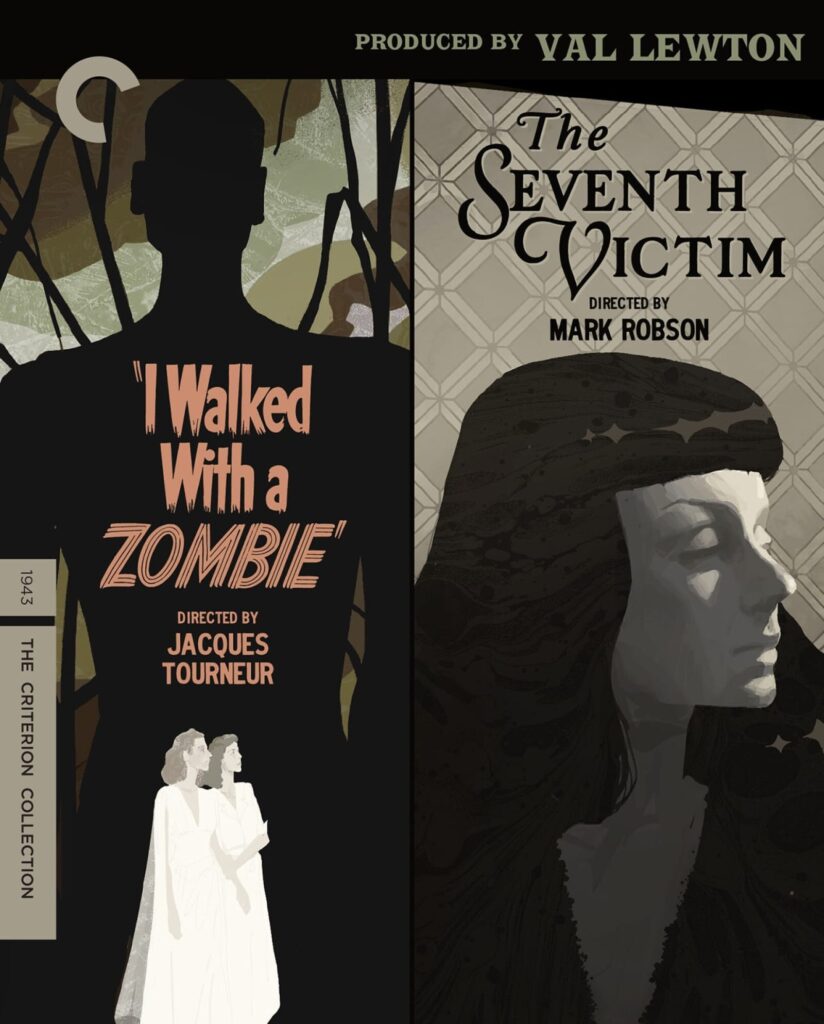
I Walked with a Zombie & The Seventh Victim (Criterion) Producer Val Lewton produced a stunning series of films for RKO in the 40s that relied more on mood and atmosphere and created suspense through shadow and lighting. Two of his best are included in this invaluable set. I Walked with a Zombie (1943) stars Frances Dee as a Canadian nurse who travels to San Sebastian in the West Indies to care for the ill wife of a plantation owner (Tom Conway). In an attempt by the nurse to cure the woman of her “living-dead” state, she leads her through the reeds at night to a voodoo ceremony where they encounter a sinister, giant, bug-eyed native sentry guarding the way. Incredibly atmospheric and visually stunning thanks to director Jacques Tourneur. The Seventh Victim (1943) stars luminous Kim Hunter (in her first screen role) as a young woman named Mary Gibson who comes to Manhattan searching for her missing, mysterious sister Jacqueline (Jean Brooks). Jacqueline is in hiding from members of a secretive devil cult. A scene with Mary is in the shower and the shadow of an ominous woman can be seen through the curtain predates Alfred Hitchcock’s Psycho. Another sequence where Jacqueline is stalked at night through the winding Greenwich Village streets by a sinister man with a switchblade is just nightmarish thanks to the assured direction by Mark Robson. It also has one of the most memorably haunting endings I’ve ever seen in a film. The Blu-ray comes with audio commentary and a documentary Shadows in the Dark: The Val Lewton Legacy (2005) and an extra “The Origins of the Zombie, from Haiti to the U.S.”
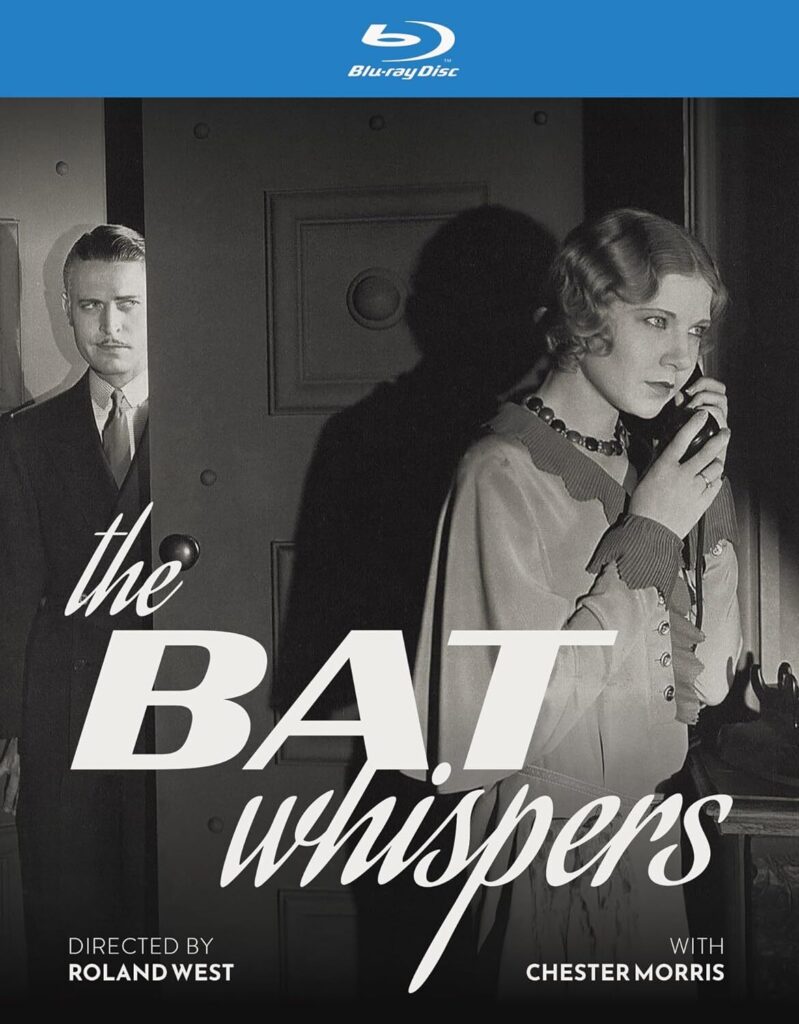
The Bat Whispers (VCI) Roland West’a innovative 1930 thriller, based on the novel by Mary Roberts Rinehart, follows a master thief called the Bat. Another crook foils his bank robbery so he chases him to a musty old mansion that’s been rented for the summer by a mystery writer and her nervous housemaid (whose hysterical performance is like nails on a blackboard). Using miniature sets and wild tracking shots, The Bat Whispers was filmed in 35mm as well in a special 65 mm format. This Blu-ray includes all three versions of the film (including the British version), restored by UCLA. If you watch them back-to-back, you can plainly see that each shot is blocked differently to fit the format. This was comic-book artist Bob Kane’s main inspiration for his creation of Batman. This 2-disc Blu-ray includes audio commentary, liner notes and as an extra the 1959 version- The Bat starring Vincent Price and Agnes Moorehead. I was astonished how fabulous this 1959 version looked here. It may be the best it’s ever looked on home video.
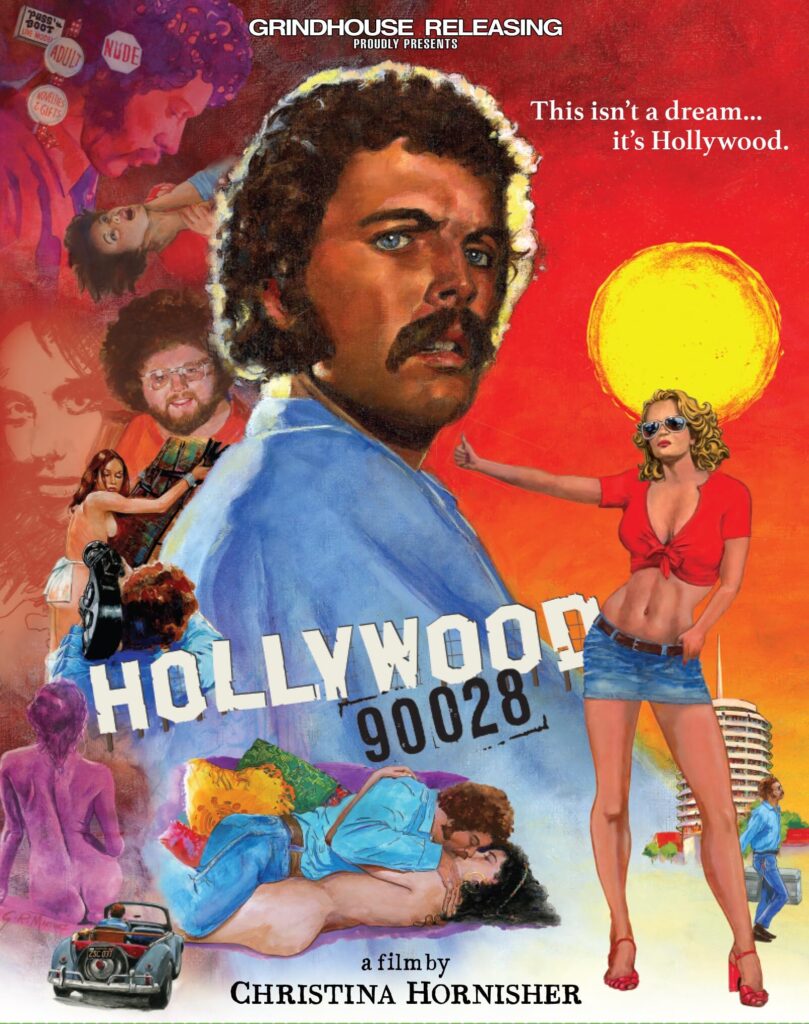
Hollywood 90028 (Grindhouse Releasing) In the past Grindhouse Releasing has rescued some notorious sleazy wonders from oblivion so I was excited about this film which I had never heard of, even in later title changes “Twisted Throats” or “Hollywood Hillside Strangler.” I knew the film was set in the seedier L.A. of 1969 and it was about a cinematographer trying to get work and forced to shoot X-rated porno loops. And the fact that he also strangled women he picked up. Would this be a sleazoid version of Peeping Tom? Well to my great astonishment it’s an absolutely fascinating, beautifully made movie reflecting the darkness that settled over L.A. after the Manson murders. Directed by Christina Hornisher who was just out of UCLA film school- she wrote, produced and directed the film. The movie has a very European art-house feel to it, and while it depicts the Adult Theaters and strip clubs and seedier aspects of the city at the time, it also reflects the broken dreams of the people who flocked there, fantasizing of a career in the business only to be faced with a grimier reality. Christopher Augustine is really perfect as Mark, the cinematographer/strangler. During the credit sequence, we see glimpses of a tragedy that occurred when he was a young boy that probably permanently damaged him, but on the surface he seems like a nice guy. He meets a pretty girl- Michelle (Jeannette Dilger) on one of his shoots and falls for her and they drive around the city in his beat-up VW and talk about their lives and dreams. The film is also a visual time capsule of L.A. at the time. Even the “Hollywood” sign becomes a major plot point. The extras on the films are copious, including interviews with cast members about their lives and careers. Director Tom DeSimone recounts when he went to UCLA and was good friends with Christina Hornisher. He reflects on their great friendship and her life. Even included is the soundtrack by Basil Poledouris. This strange and affecting film wasn’t even released for four years after it was made and never given much of a release in theaters, and it’s so deserving of rediscovery, re-evaluation and respect.

Creature with the Blue Hand & Web of the Spider (Film Masters). A double-dose of Klaus Kinski. And to see his early career in Euro-crime and horror films before he hooked up with Werner Herzog. Creature with the Blue Hand (1967) was a later entry in the “Krimi” films Germany put out based on the thrillers by author Edgar Wallace. There was a stock company (which Klaus Kinski was a part of) that was used in every film. By now, Klaus Kinski was moved from bit player to lead and this film is in color (and a bigger budget) rather than the usual black & white. Kinski plays twin brothers. One is in jail for a murder he says he didn’t commit. The other oversees a huge gloomy castle with scores of secret passageways. The one in prison escapes and heads towards the castle and family members start getting bumped off by a killer wearing a blue steel glove with knives for fingers. Web of the Spider (1971) was director Antonio Margheriti’s color remake of his own black and white gothic horror masterpiece Danza Macabra (1964). It’s about a journalist (Anthony Franciosa) who makes a wager when he meets up with Edgar Allan Poe (Klaus Kinski) in a tavern that he can’t spend a whole night in a very haunted house. He agrees, with nightmarish results. During the evening, he is confronted with an entire assortment of restless, blood-hungry spirits. There are audio commentaries by film historians Stephen Jones and Kim Newman, plus a bonus feature The Bloody Dead (1987), which is producer Sam Sherman’s tired attempt to jazz up Creature with the Blue Hand with gory, badly shot inserts.
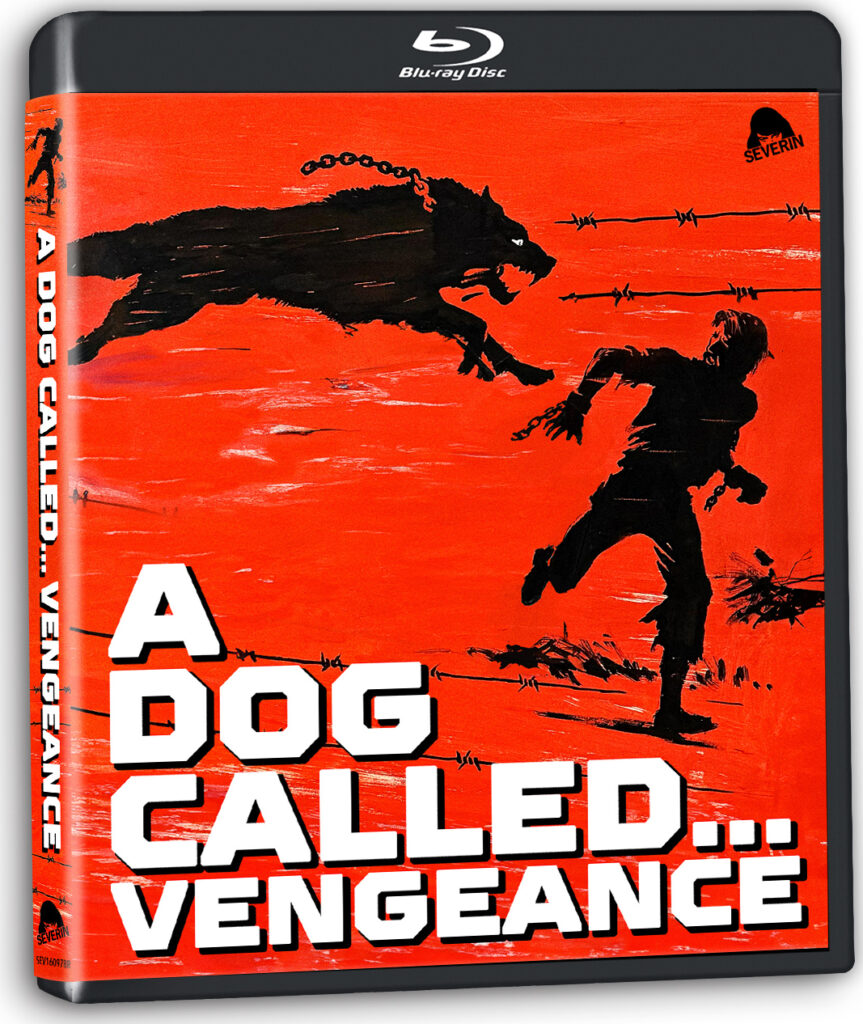
A Dog Called…Vengeance (Severin) Jason Miller gives a fearless (and full-frontal) performance as a political prisoner in a nightmarish work camp in Central America, the country suffering under a brutal dictatorship. He escapes and goes on the run but is relentlessly followed by a vicious guard dog. Think Les Miserables but with a pooch instead of Javert. Marisa Paredes (High Heels) plays a gun-toting guerilla fighter (she was married to the director Antonio Isasi at the time). Shot not long after the end of the Franco regime, this Spanish action film must have been pretty daring at the time. Shot in Venezuela, Miller has an amazing scene attacked by the dog while swimming nude and fights it off on the shore with his fists. There’s a notice at the opening of the film that “ensures none of the animals involved were harmed in the making of the film.” The dog scenes are pretty intense. The extras include interviews with Marisa Parides and her daughter Maria Isasi and “A Film Ahead of its Time,” an appreciation by Angel Sala, head of programming at the Stiges Film festival.
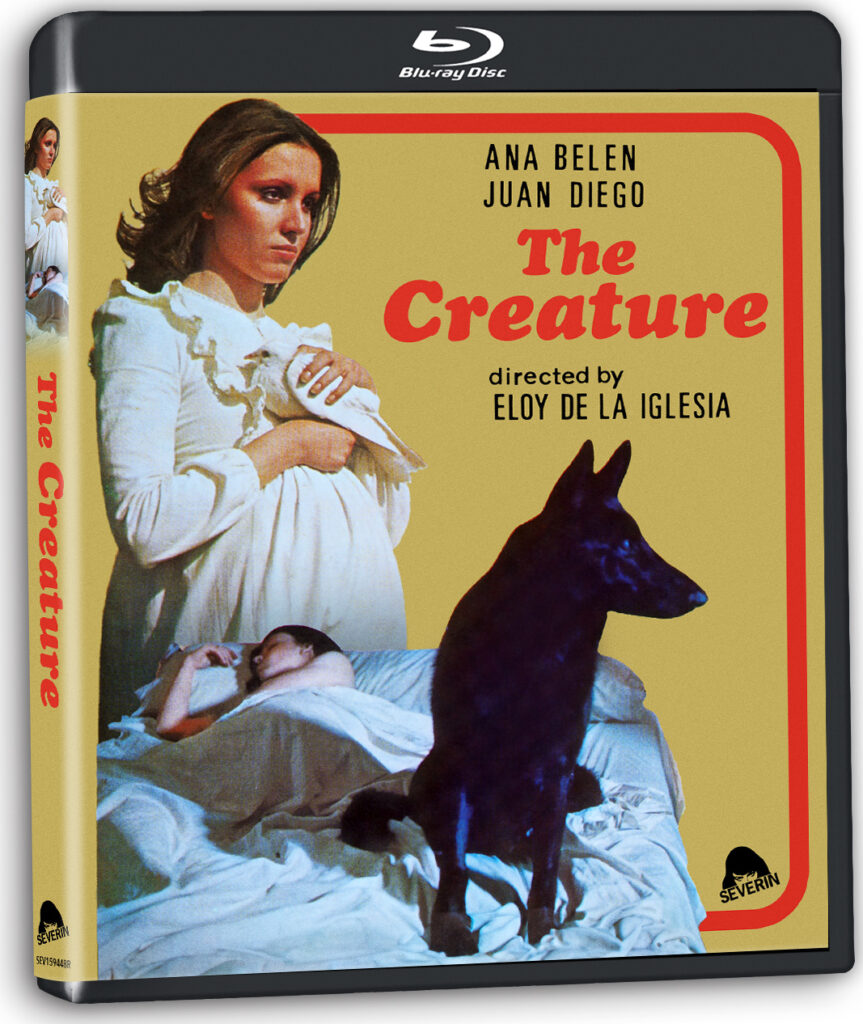
The Creature (Severin) A gleefully perverse 1977 film by controversial Spanish director Eloy de la Iglesia (Cannibal Man) about a neglected wife (Ana Belen), whose husband (Juan Diego) is religious, politically right-wing and hosts a TV variety show. After four years of trying she finally becomes pregnant but cruelly loses the baby in the 9thmonth. She rescues a seemly abandoned stray dog and becomes obsessed with it, becoming more and more romantically attached to it than her husband, who bristles with jealously and anger. What’s fascinating about the film is that it’s more about the passion the wife feels for the dog and how complicated her feelings about that become. It’s filmed more like a Douglas Sirk film in many ways, with overcharged melodrama but also with incredibly subversive subtext. Gaspar Noe (Irreversible), a big fan of Eloy de la Iglesia, discusses at length the director’s work and on another extra introduces The Creature at the Cinematheque Francaise. A really bizarre, uniquely whacked-out film- even for Eloy de la Iglesia.
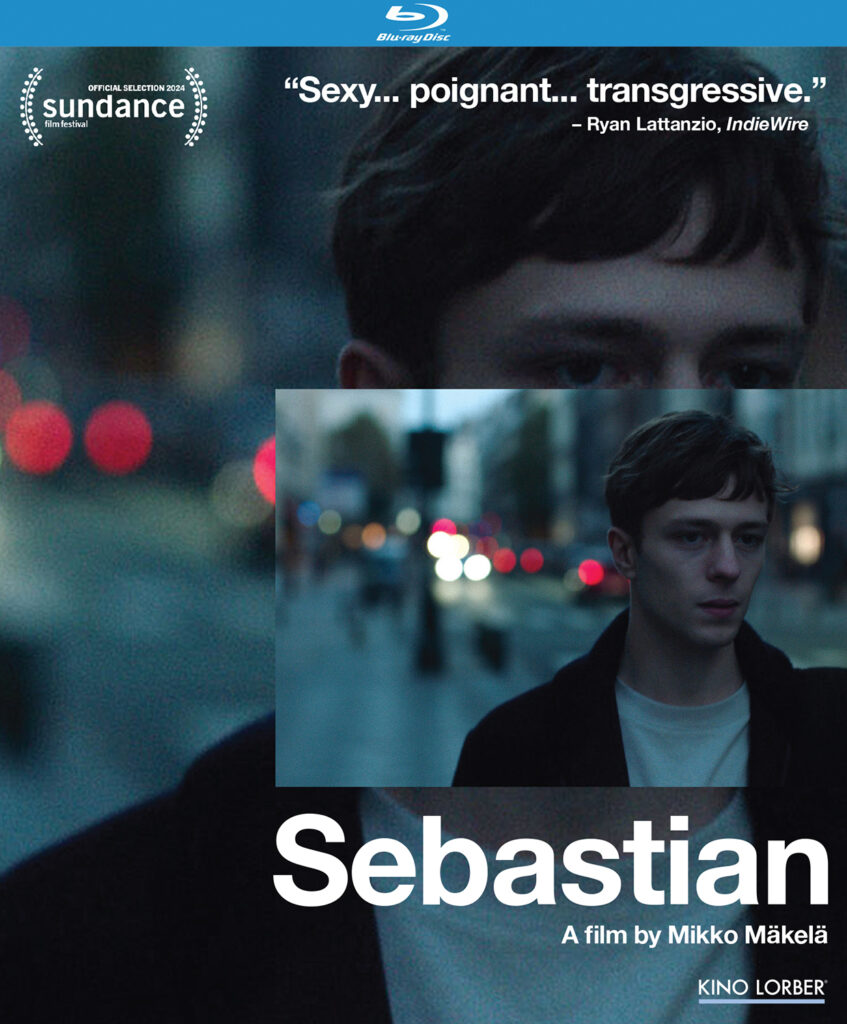
Sebastian (Kino Lorber) A smart, sexy and soulful portrait of Max (Ruaridh Mollica), a good looking young writer working for a magazine and living in London. He also secretly sidelines as a sex worker, chronicling each sordid encounter as chapters in a proposed novel. But there is more going on than just filthy fodder for fiction. Max enjoys these sexual trysts, especially the lust and longing his body brings to his johns. He also calls himself “Sebastian,” to prospective clients, further creating a protective shell around his sense of self. “You’ve got that whole boy next door thing going on but it’s pure filth underneath,” a client comments to him afterwards. He starts slacking at work and his book gets slightly derailed when he begins to form a loving relationship with an erudite, much older trick. Not all of this is glamorous or titillating, but there is an emotional honesty to it. The director, Mikko Makela, wisely isn’t out to make this a depressing walk on the wild side. There is a refreshing sex positivity about Max’s erotic journey.
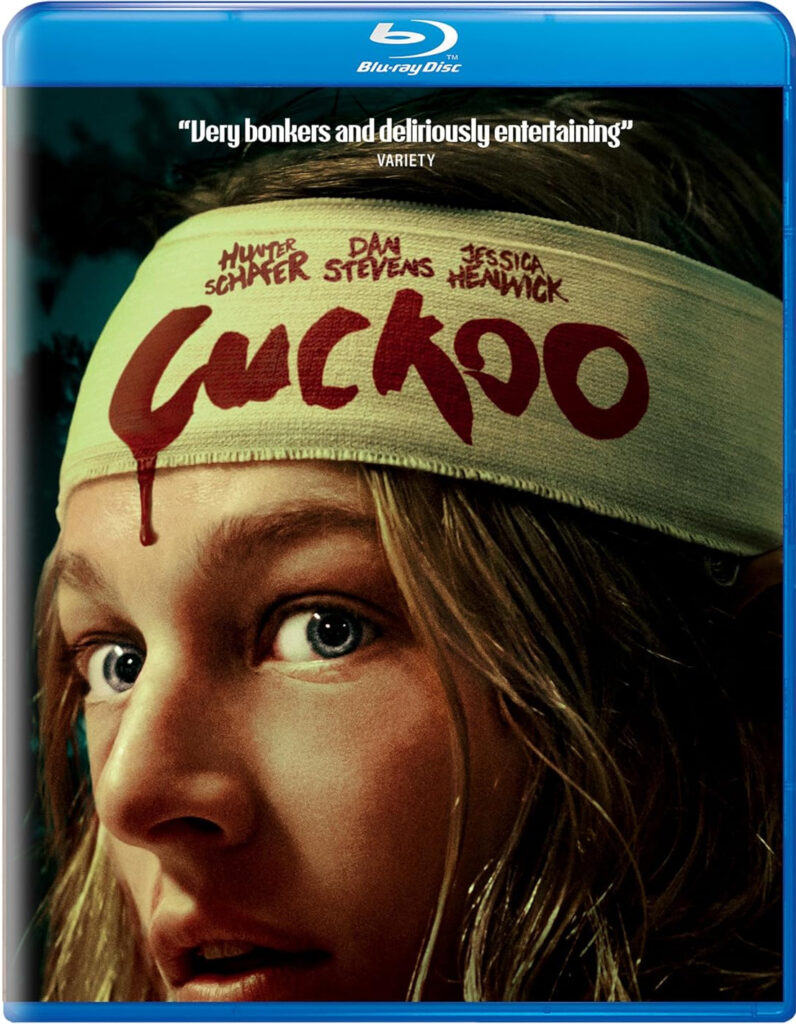
Cuckoo (Decal Releasing) Cuckoo is writer/director Tilman Singer’s appropriately titled, defiantly bizarre, enjoyably unhinged horror film. An unhappy teenage girl- 17-year-old Gretchen (scrappy, sensational Hunter Schafer), is begrudgingly uprooted from America and forced to move with her architect father (Marton Csokas) to a desolate resort in the German Alps, along with her unfriendly stepmother (Jessica Henwick) and her mute, much younger, half-sister Alma (Mila Lieu). The creepy resort manager- Herr Konig (Dan Stevens)- offers Gretchen a job at the reception desk of the hotel, where strangers stagger in and vomit in the lobby for some unknown reason. “Is this normal?” a startled guest asks. Everything feels off there. Even little Alma starts having violent seizures as she gazes off into the ominous, impenetrable forest. One night cycling home from work, a weird woman violently chases Gretchen down the road, relentlessly attacking her until she races to safety at the local hospital where she is stitched up from a gash in her forehead. Her story is met with bored skepticism by the local police. Then the movie merrily jumps the tracks and becomes this nightmarish conspiracy of sinister avian reproductive experiments as Gretchen fights to survive. The oppressive atmosphere of dread and disorientation (plus the intricate sound design) is just inspired. And Dan Stevens is fiendishly fabulous in his role as the droll, demonic mastermind.
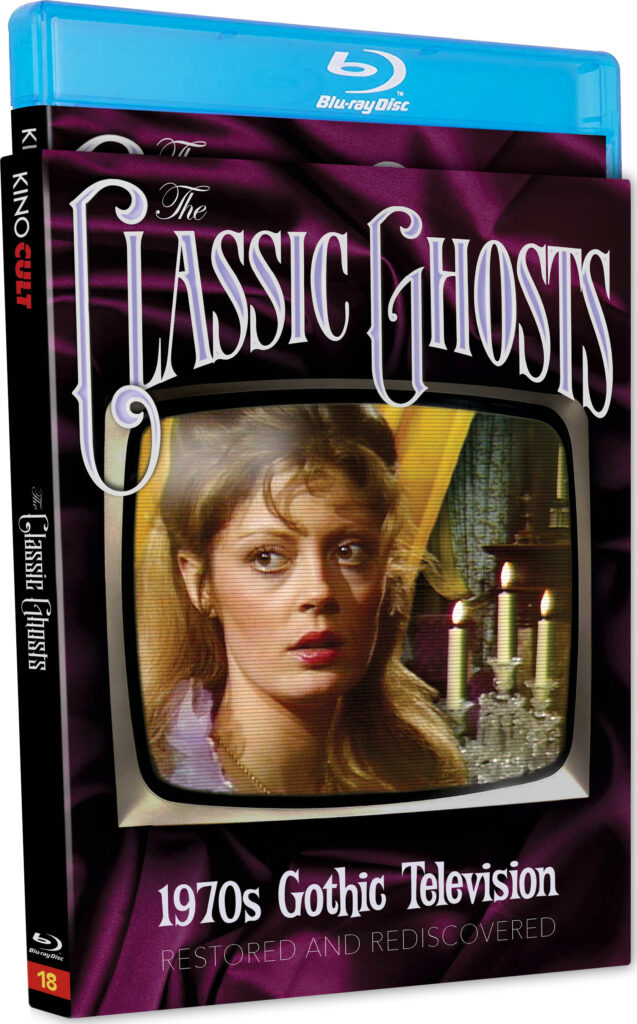
The Classic Ghosts (Kino Lorber) These 5 feature-length films appeared on ABC in 1973 with a primarily female creative team and have rarely been seen since. Several were directed by either Lela Swift or Gloria Monty and it was produced by Jacqueline Bobbin. All have been preserved and restored by UCLA Film and Television Archive. The Haunting of Rosalind is based on a Henry James short story and stars a young, pretty Susan Sarandon as a woman courted by her brother’s friend (Frank Converse), while her “psychic” sister Rosalind (Pamela Payton-Wright) is haunted by a spirit of some kind warning her about the suitor. The Screaming Skull stars David McCallum as a cranial scientist with a shrewish wife (Carrie Nye), who blames him for the death of her son. He decides to murder her, only to be haunted by her mournful-sounding skull. Even his brother (Vincent Gardenia) is tormented by her vengeful spirit. The Deadly Visitor. Handsome Perry King plays a writer who moves into a rooming house run by an amorous landlady (sublime Gwen Verdon). He is attacked nightly by an invisible spirit and manages to tie it up, determined to uncover the mystery of this malevolent presence. The House and the Brain. An Army Major (Keith Charles) takes a room in an old mansion in New Orleans. The beautiful Marianna (Carol Williard) lives there with her creepy guardian Constantine St. Mal (Hurd Hatfield/The Picture of Dorian Gray), who has a pentagram on one hand and instructs Marianna to take part in a deadly ritual they play out over and over again. And the Bones Came Together. The grave of Judith Shim weeps tears of blood in this eerie tale about her elderly husband being moved out of where he lived because of an urban renewal plan. Laurence Luckinbill plays the official in charge of displacing him who is cursed by the vengeful tenant.
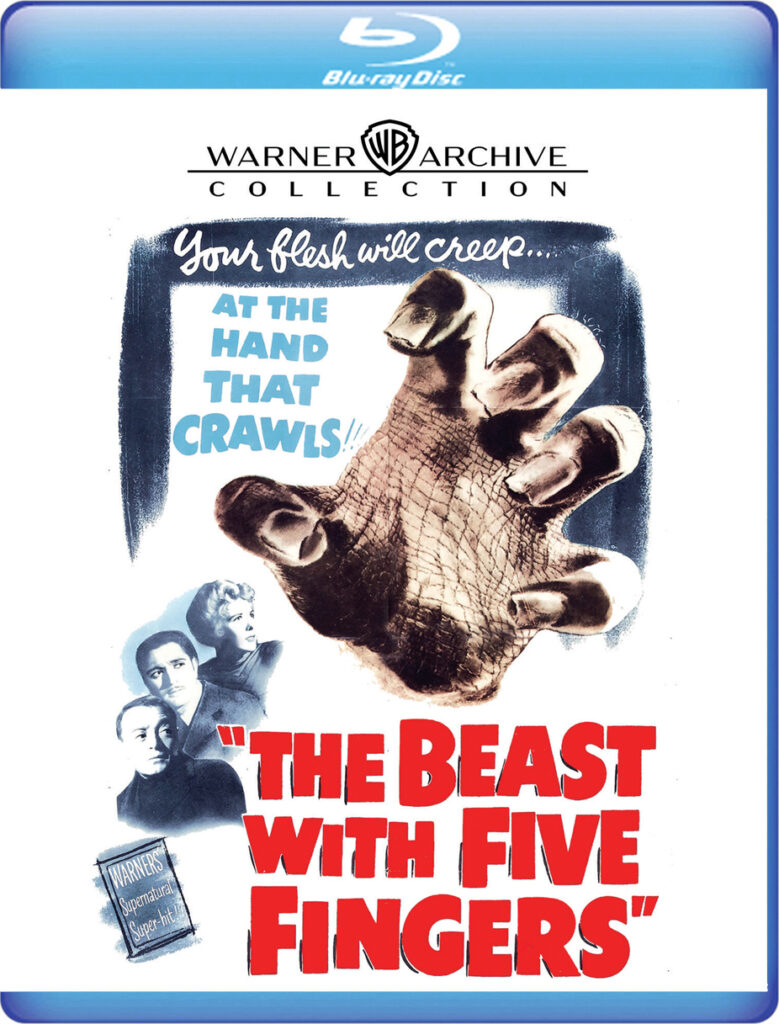
The Beast with Five Fingers (Warner Archive) This superior 1946 psychological chiller is directed by Robert Florey, with a screenplay by Curt Siodmak, set in “the small Italian village of San Stefano- nearly fifty years ago.” When a tyrannical, crippled pianist dies, his dismembered hand is seen crawling across the floor of the mansion or playing the piano in the dead of night. Also strangling greedy family members who are attempting to question his will, leaving his fortune to his devoted nurse (Andrea King). Peter Lorre has a field day as a creepy scholar of astrology, tormented by the sight of the disembodied hand. J. Carrol Naish plays the “commissario,” who offers some comic relief at the end of this memorably effective gothic horror tale.
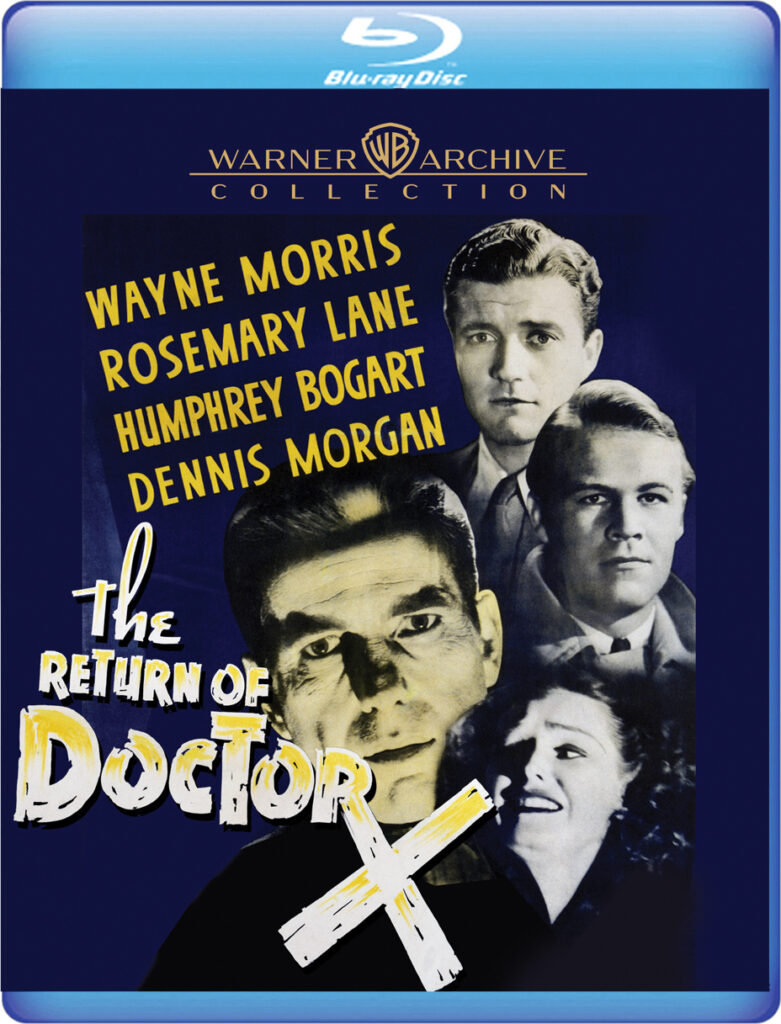
The Return of Doctor X (Warner Archive) Humphrey Bogart’s only horror movie and he hated the film so much he never talked about it. Supposedly a sequel to Doctor X, Bogart plays the deceased doctor brought back to life by a hematologist with synthetic blood but he needs to kill and drink real blood to stay alive. With a shock of white in his hair and pale skin he certainly looks the part. To be honest, this 1939 Warner Brothers film, directed by Vincent Sherman is a lot of fun. Wayne Morris plays the wise-cracking reporter for the Morning Dispatch and Dennis Morgan his good friend. Rosemary Lane plays a near victim of the nefarious vampire Doctor X.
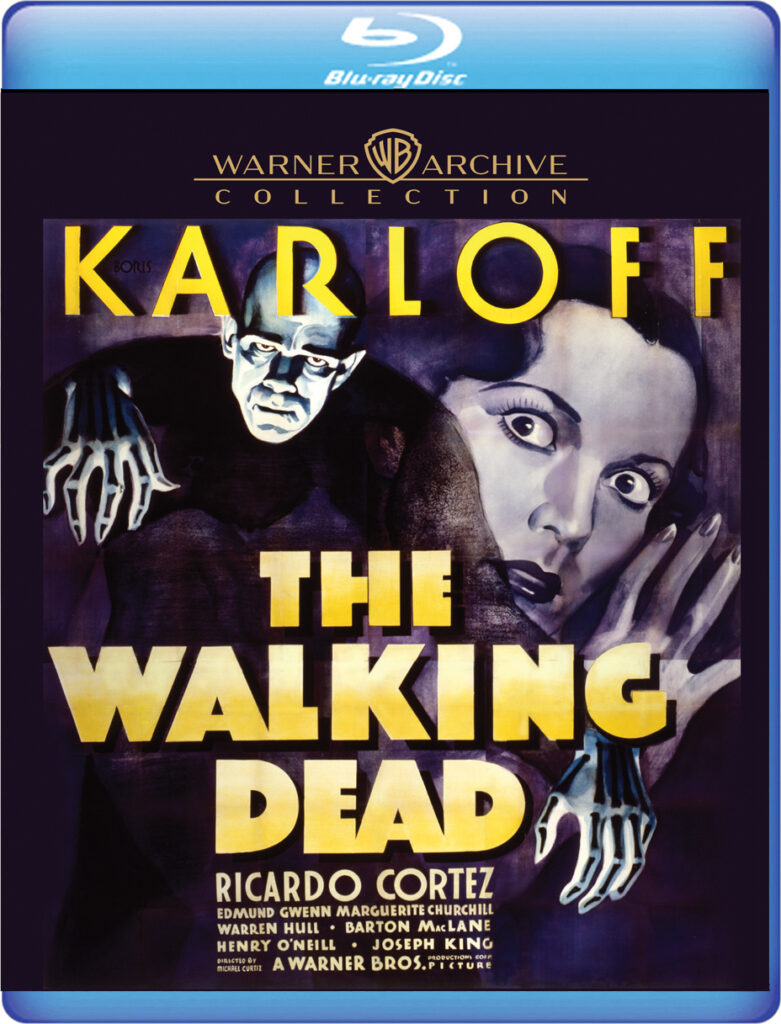
The Walking Dead (Warner Archive) Excellent 1936 chiller directed by Michael Curtiz (Casablanca) starring Boris Karloff as a former convict who is falsely accused of the murder of a judge thanks to some shady racketeers. Sent to the electric chair, after death his body is brought back to life thanks to scientist (Miracle on 34th Street’s Edmund Gwenn) and he systematically gets revenge on those who did him wrong. With a streak of white in his hair and a fiendish stare, he leads his victims to their doom without even touching them. Just terrific, with a truly great performance by Karloff.
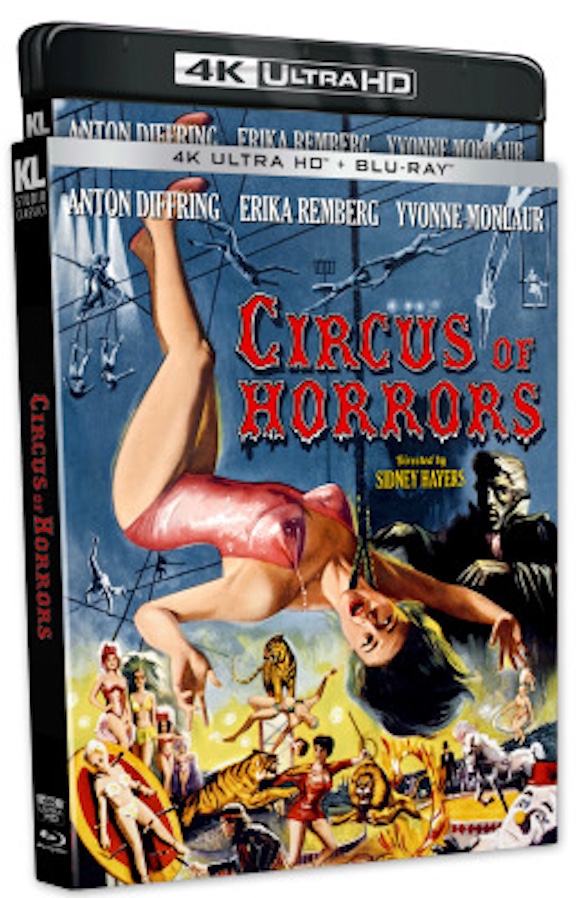
Circus of Horrors (Kino Lorber) 4K UHD upgrade of this outrageous mix of sex, sadism and sleaze- and from 1960, too! Anton Diffring plays a plastic surgeon on the run (his own face scarred and replaced after a car accident). He ends up heading a circus populated by criminals and ex-prostitutes, whose faces he has altered. When any performer tries to leave, they are met with a hideous “accidental” death in the ring. This ill-fated circus really starts to see profits from bloodthirsty crowds anticipating disasters. If you saw this as a kid (and I did) you were permanently fucked-up.
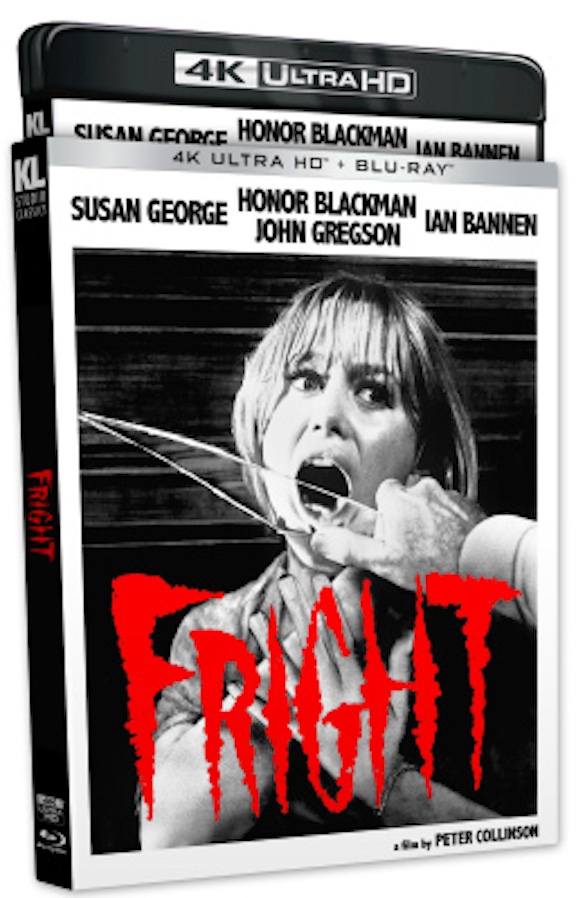
Fright (Kino Lorber) A new 4K UHD Blu-ray of what may be the first “babysitter-in-peril” film. Lovely Susan George (Straw Dogs) plays the young woman left alone to care for a young boy in a remote English home who comes under siege by the child’s psychotic biological father (Ian Bannen), who has escaped an asylum. Honor Blackman (Goldfinger) plays the mother out for dinner unaware that her loony ex is on the loose in this taut 1971 thriller, expertly directed by Peter Collinson (who did two other terrific psychological suspense films- The Penthouse and Straight on Till Morning).
